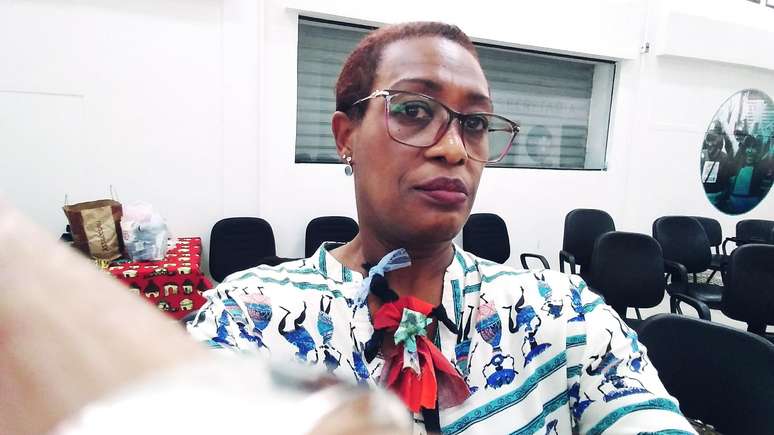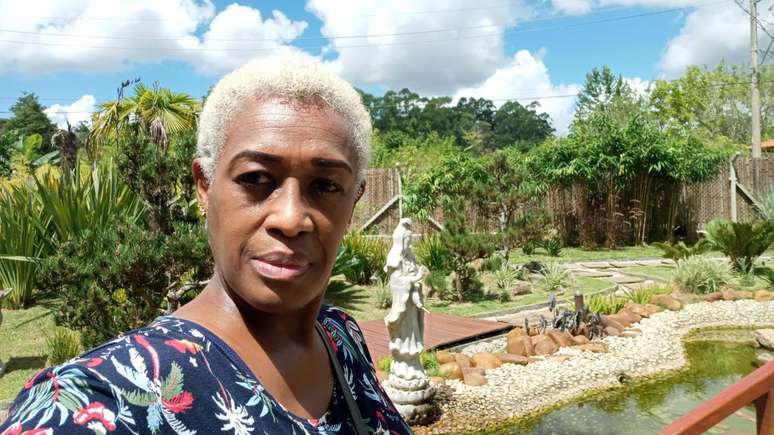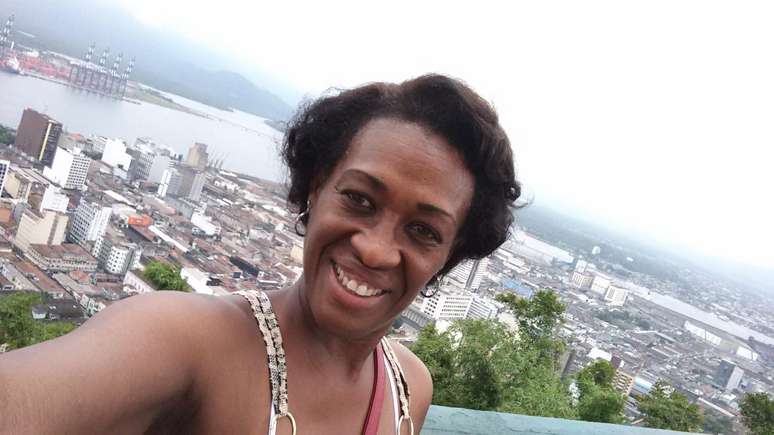Ana Regina do Espírito Santo was 29 years old when she had to have her uterus removed.
html[data-range=”xlarge”] figure image img.img-889d1e19de474894a63ec03e90c5bb5ewcqayt42 { width: 774px; height: 435px; }HTML[data-range=”large”] figure image img.img-889d1e19de474894a63ec03e90c5bb5ewcqayt42 { width: 548px; height: 308px; }HTML[data-range=”small”] figure image img.img-889d1e19de474894a63ec03e90c5bb5ewcqayt42, html[data-range=”medium”] figure image img.img-889d1e19de474894a63ec03e90c5bb5ewcqayt42 { width: 564px; height: 317px; }
When nurse Ana Regina do Espírito Santo was 29 years old, she experienced strange stomach symptoms. “It felt like there was something jumping inside me, inside my uterus, but I wasn’t pregnant,” the now-retired woman told BBC News Brasil.
While consulting with doctors, he was diagnosed with fibroid in the uterus. Other women in her family, including her aunts and her mother, had previously suffered from fibroids, cancer, and needed surgery to remove the organ. In this way they prevented the onset of other diseases or the deterioration of the state of health.
“I have a family history. My aunts already had fibroids and my grandmother had uterine cancer. So, I thought about my health first,” she says.
After some tests, the doctor confirmed that surgery would be needed, also known as a hysterectomy, the removal of all or part of the uterus, usually associated with the removal of the fallopian tubes.
The uterus weighed a kilo
Ana ended up having the operation, but the problem with the organ was more advanced than the doctors imagined.
A nurse by training, she says that, at the time, she only asked the surgeon to make a cut near her pelvis so she could wear a bikini.
“I used to live in Santos (on the coast of São Paulo) and that was my only concern,” she says.
According to Ana, during the surgery, the uterus “burst” and there was no way to preserve the organ. Doctors said she already weighed a kilo.
“In my case, there was no way to keep the uterus. The fibroid grew very quickly and it was like I was six months pregnant. It gave the impression of how heavy it was.”
In addition to the uterus, doctors had to remove the ovary and fallopian tubes. “When the doctors saw the other organs, they were in terrible shape,” he recalls.
Although it was a delicate surgery, Ana says she had a good recovery, although she did notice excessive weight loss after the surgery.
“I lost a lot of weight and reached 45 kg. My clothes danced on me. I took two months off. I had surgery in January, went back to work in March and had another health problem”.
Shocked self-esteem and discrimination

During her post-op period, she says a neighbor suggested Ana and her mother visit her home, as a healer would be there and could say a prayer for her.
At the end of the meeting, they had an unpleasant surprise. Knowing what he had been through, the man said, “A woman like that is no longer good.”
“Nobody had asked for his opinion. We didn’t expect him to and my mother got very angry. An unhappy sentence like that echoed for a long time in my life. He was very sorry about it and this was in my mind, subconscious and started to think I was trash,” she says indignantly.
Ana believes that society was much more sexist then than it is now.
“It’s like we’re only good enough to have a kid,” she says.
Prejudice also persisted in her life, especially in relationships. Every time I dated a man and told him I couldn’t be a mother, they disappeared, Ana says.
“I don’t know what dating is, I had no relationships and no one wanted anything to do with me. Men, regardless of ethnicity, would make excuses and sneak off. I also started researching and seeing the loneliness of black women It was something else in the ’90s,” he says.
Maternity and mental health

Unable to get pregnant, Ana says she thought about adopting a child. The plan was supported by her mother at the time, but was gradually abandoned.
“I was already consolidating my career, gaining financial independence and it was one thing that didn’t go on. So it went on and on and on. If I wanted I would have really adopted it, but it was a choice and today we have a condition of choice,” he says. .
She also sees the ability to have autonomy in her decisions and the understanding that not all women need to be mothers as a breakthrough. Ana points out that she has always had a lot of support from her family and close friends.
“He had great empathy. He had friends who said they didn’t have kids and they were happy. Others said if they could, they wouldn’t have kids.”
Even after the removal of the uterus, the prejudicial phrase heard many years ago still echoed in her head. “He was put away and one day he woke up in me, so that I got sick.”
Traumas appeared at work and impacted Ana’s self-esteem, who even had “burnout syndrome” and says she didn’t realize she had the problem. “That was a trigger. It was dormant and it came out that way.”
She says it took her years to take care of her mental health, and it wasn’t until 2013 that she decided to talk about it openly in therapy sessions. Together, they underwent psychiatric follow-up and were on medication for a year.
After that, she says, she started to deal better with everything that happened in the past.
Today, Ana says she’s evolved a lot and sees that she doesn’t need to be in a relationship to feel validated.
“You begin to understand that you don’t need to be in a relationship to be happy. Despite everything, I’m fine. I take English lessons, have my own apartment, live on the beach and have dance lessons on Saturdays Today I have the life I’ve always wanted and I’m fine,” he concludes.

What is a hysterectomy?
Surgery consists in the removal of the uterus and can be performed vaginally or abdominally.
It can be a partial hysterectomy, when the corpus uteri is removed and the cervix is preserved. The ovaries and tubes may or may not be removed, depending on the case.
Another option is total hysterectomy, which is characterized by the removal of the entire uterus, including the cervix, with the option of removing the fallopian tubes and ovaries.
Finally, there is also radical hysterectomy, a procedure that removes the entire uterus, including the cervix, as well as tissue on both sides of the cervix of the reproductive organ.
Hospitalization and recovery times vary according to the type of hysterectomy performed and the patient’s health conditions.
In a minimally invasive hysterectomy, the patient usually stays less than 24 hours in the hospital, according to specialists.
There are several indications to perform the surgery and as with Ana, the fibroids are the root cause of the problem.
“Fibroids are benign tumors that grow in the uterine tissues. They can cause great loss of blood, with anemia,” explains Luana Ariadne Ferreira, gynecologist at the Edmundo Vasconcelos hospital, in São Paulo.
According to Fernanda Schier de Fraga, gynecologist, obstetrician and professor of medicine at the Pontifical Catholic University of Paraná (PUC-PR), it is important to observe symptoms such as heavy flow, menstruation for many consecutive days and severe cramps.
The surgical procedure can be performed as a preventative for the onset of other diseases, according to the specialists. Additionally, family history may also be indicative for hysterectomy.
“A family history of uterine diseases – such as fibroids, tumors, endometriosis – can increase the risk of developing these conditions in women. Therefore, it is important that women with a family history of uterine diseases inform their doctors and undergo tests of routine more frequently to promptly detect any problem”, warns Giovana Brandalize, oncological gynecologist at the São Marcelino Champagnat Hospital, in Curitiba (PR).
The expert warns that genetic predisposition is one of the factors in the development of diseases, but it is important to remember that others, such as age and lifestyle, can also influence the development of these diseases.
The PUC-PR specialist also points out that “if it is a cis woman, the ideal is to demonstrate that her sex life will continue. For this, psychological counseling is necessary”.
And, even having the uterus partially or completely removed, experts point out that women who want to can still seek motherhood. And they say a support network and help from specialized professionals throughout the process is essential.
Currently, if the woman fails to get pregnant, there are alternatives such as adoption, egg freezing and uterus transplantation is already being studied.
“In patients who want to conceive and have disease in the uterus, conservative surgery is always considered, removing only the fibroids. Even in early cases of uterine and cervical cancer, it is possible to preserve the uterus and maintain Fertility If you cannot preserve the uterus, it is recommended to freeze the eggs, and then evaluate a pregnancy based on a supportive belly,” explains Brandalize.
Source: Terra
Ben Stock is a lifestyle journalist and author at Gossipify. He writes about topics such as health, wellness, travel, food and home decor. He provides practical advice and inspiration to improve well-being, keeps readers up to date with latest lifestyle news and trends, known for his engaging writing style, in-depth analysis and unique perspectives.









